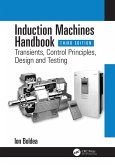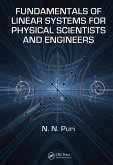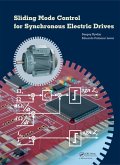Modeling, performance, design, control, and testing of linear electric machines (LEMs) show notable differences with respect to rotary electric motor drives, which warrant a dedicated treatment of these aspects.
The Second Edition (First Edition: 2013) concentrates on the above technical aspects of various types of LEMs in close relationship with specific applications via numerical examples of modeling, design, control, and testing, with ample representative results from literature, industry and some of the author's contributions, such as:
- Technical field and circuit modeling of linear induction motors in flat configurations for low and high speeds (with and without dynamic end effects) and in tubular configurations short travel design, control and testing
- Linear synchronous motor (LSM) drives in dc-excited, homopolar, reluctance and superconducting excitation configurations for urban and interurban high-speed vehicles propulsion and integrated propulsion and levitation (in MAGLEVs) modeling, design and control with full-scale numerical examples, with emphasis on lower KWh/passenger/Km at high speeds
- Flat and tubular linear permanent magnet (PM) synchronous motors (L-PMSMs), mainly destined to industrial indoor transport for automation at high efficiency in clean rooms
- Linear "flux-modulation" motors- new breed, suitable for very low-speed applications due to higher thrust density
- Plunger solenoids in various applications including new valve PM actuators with millisecond response time
- Linear resonant PM oscillatory motors design, control and testing mainly destined to compressors for higher efficiency in compact drives
- Attraction and repulsive force suspension (levitation) systems for MAGLEVs
- Active and passive guideway MAGLEVs in urban and superhigh-speed interurban transport at lower Kwh per passenger/km (in lighter vehicles without wheels)
The numerous numerical design and control examples (with practical specifications) throughout the 23 chapters of the book allow the reader deep and fast access to a practical but thorough unitary (good for comparisons) methodology in designing and controlling LEMs for various applications.
Dieser Download kann aus rechtlichen Gründen nur mit Rechnungsadresse in A, B, BG, CY, CZ, D, DK, EW, E, FIN, F, GR, HR, H, IRL, I, LT, L, LR, M, NL, PL, P, R, S, SLO, SK ausgeliefert werden.
-Giovanni Spagnuolo, University of Salerno, Italy









